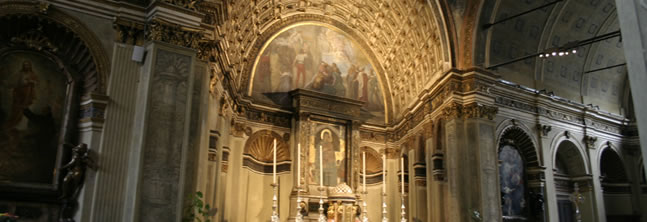This small church usually goes unnoticed as it is slightly off the main road, hidden between other buildings. However, it offers something unique to marvel its visitors. As you enter the church, look at the apse in front of you, move closer to explore it and you will be surprised...
Bramante’s optical illusion
The church we can admire today was built on the site of a small 9th century church erected by archbishop Ansperto and dedicated to Saint Satyrus. In 1478 Donato Bramante, an architect working at the Sforza court as Leonardo, was asked to plan the church reconstruction. However, the main problem he faced was the lack of space for building any extension. In fact, the surrounding alleys were densely populated by metal workers, arms manufacturers and goldsmiths as it can still be seen from the street names that have remained unchanged since the middle ages. The businesses and workshops exploited every inch at their disposal leaving little space for further construction. Lacking the space to build an apse, Bramante came up with a brilliant idea. He created the illusion of an apse of equal length to the nave, directly behind the main alter. The trompe l'oeil relies on a fake presbytery with three bays, made using a painted terracotta relief.
Leonardo was here
There is just a tiny connection between Leonardo and this church. His name was in fact registered in the accounts of the confraternity of Santa Maria presso San Satiro but there are no documents shedding light on Leonardo’s actual contribution. Nonetheless, the church is a real gem of architecture, worth a visit as it will help you understand the context in which Leonardo worked taking probably inspiration for some of his future creations.
Did you know that?
The altar is adorned with a 13th century painting depicting the Madonna with child. Originally the painting was located on the outside of the church. Legend has it that in 1242 a young man “stabbed” the image of Christ causing blood to gush forth from the fresco. The miraculous image became then an object of pilgrimage. The sacrilegious dagger is still today housed in the church.



